Welcome back! Issue 5 is up and ready for download. As you might expect at this point, It's packed with interesting information on a wide range of topics. Frankly, the broad scope of
Work is starting to outstrip my ability to encapsulate its issues.
No. 5 is particularly manic in this regard, with equal devotion applied to topics of taste as well as technicality. I'd recommend taking a coffee break between reading "Frames A La Mode," and "Boring Small Cylinders." I didn't, and suffered some kind of bewildering cognitive whiplash. (I'll admit that it took a second reading to realize the "cylinders" in question are the kind that you might find in a steam engine, rather than say, cylindrical pieces of material like gun barrels, etc) That being said, both are fantastic articles and I'm anxious to hear what people think of them.
In any case, I'm probably not doing the publication such a great service by trying to recap articles on a weekly basis. So, until I find my blogger bearings format-wise, I'm just going to highlight a few snippets in an attempt to provide some helpful
links.

"You Dirty Boy" must have been such a popular meme of the time as to require no further description. If you follow the link you'll see the sculpture, but nothing to account for its household-name status. Turns out, it was commissioned by the
Pears' Soap Company and subject to mass distribution in the form tin copies and thousands of print ads.
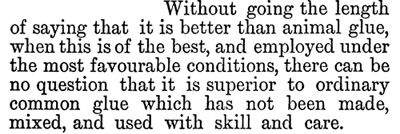
Le Page's Glue has come up a lot in previous issues, but gets a lot of play in No. 5. Le Page's adhesives are still manufactured today, but the original recipes being lauded in
Work appear to be some kind of fish glue derived mixture. Interestingly, Le Page's glues were manufactured by the Russia Cement Company. Part of the Papier-Mâché method described in
No. 3 calls for Russian Glue. Connection? Not sure.
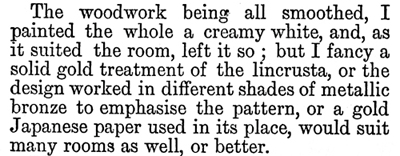
In the pages of
Work, Lincrusta is nearly as ubiquitous as overmantles. I was under the mistaken impression that this was some kind of brocade or taffeta. To my delight it appears a million times cooler. You can still get your hands on this one as well. Even the original manufacturing dies are still in use.
If you've been following the Plane Making articles, No. 5 gives instruction on an iron smoother, as well as a chariot plane. It also describes using
"red lead" for close fitting of mating parts. This move is one of the
foundation techniques for old machinists, and bears a little extra attention.
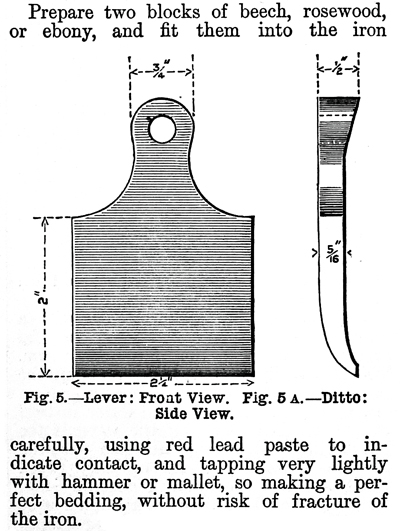
Red lead is also calledb,minium, and little
illluminated manuscripts made with the red pigment give us the word "miniature." The only living person I ever heard talk about actually using red lead was the sculpture shop tech at the Slade in London during my undergrad exchange. As you might guess, the use of lead in machine shops has fallen out of favor, of late.
Nowadays, "Prussian Blue" is used for the same purpose and is widely available. It's still a specialty item though, and I almost never have any around when I need it. At the Gramercy shop, we use soot from an oil lamp or an acetylene torch to blacken mating parts. We test the assembly, take the pieces apart again, then look for the spots where the soot has deposited or been rubbed away. It's a little tedious, but surprisingly effective. Hell, if it's sauce enough for
Holland & Holland it's sauce for Gramercy.
–TIM
ARTICLES FOUND IN THIS ISSUE:
A Drawing-Room Overmantel • Friendly Hints to Amateur Wood Workers (Part 2)
A Gossip About Hydroquinone • Home-Made Tools: Iron Smoothing Plane, Chariot Plane
Notes For Electro-Platers • Frames A La Mode
Hinges: Their Varieties and Applications • Boring Small Cylinders
Our Guide To Good Things • Shop: A Corner For Those Who Want To Talk It
• Click to Download Vol.1 - No.5 •
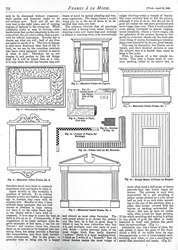
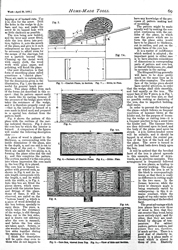
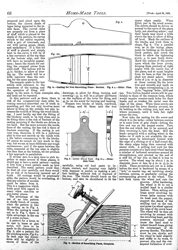
Disclaimer: Articles in Work: The Illustrated Weekly Journal for Mechanics describe materials and methods that would not be considered safe or advisable today. We are not responsible for the content of these magazines, and cannot take any responsibility for anyone attempting projects or procedures described therein.
The first issue of Work was published on March 23rd, 1889. The goal of this project is to release digital copies of the individual issues starting on the same date in 2012, effectively republishing the materials 123 years to the day from their original release.
The original printing was on thin, inexpensive paper. There are many cases of uneven inking and bleed-through from the page behind. Our copies of Work come from bound library volumes of these issues and are subject to unfavorable trimming, missing covers, etc. To minimize harm to these fragile volumes, we've undertaken the task of scanning the books ourselves. We do considerable post processing of the scans to make them clear but please bear with us if a margin is clipped too close, or a few words are unreadable. We would like to thank James Vasile and Karl Fogel for their help in supplying us with a book scanner and generally enabling this project to get off the ground.
You are welcome to download, print, and pretty much do what you want with the scan for your own personal purposes. Feel free to post a link or a copy on your blog or website. All we ask is a link back to the original project and this blog. We are not answering requests for commercial downloads or reprinting at this time.
 Joel's Blog
Joel's Blog Built-It Blog
Built-It Blog Video Roundup
Video Roundup Classes & Events
Classes & Events Work Magazine
Work Magazine

















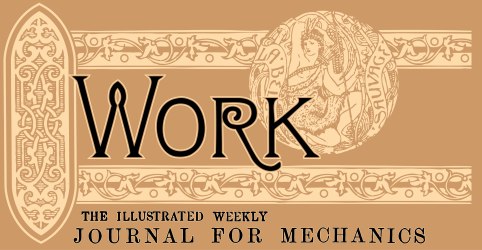
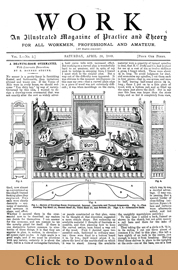
 "You Dirty Boy" must have been such a popular meme of the time as to require no further description. If you follow the link you'll see the sculpture, but nothing to account for its household-name status. Turns out, it was commissioned by the
"You Dirty Boy" must have been such a popular meme of the time as to require no further description. If you follow the link you'll see the sculpture, but nothing to account for its household-name status. Turns out, it was commissioned by the  Le Page's Glue has come up a lot in previous issues, but gets a lot of play in No. 5. Le Page's adhesives are still manufactured today, but the original recipes being lauded in Work appear to be some kind of fish glue derived mixture. Interestingly, Le Page's glues were manufactured by the Russia Cement Company. Part of the Papier-Mâché method described in
Le Page's Glue has come up a lot in previous issues, but gets a lot of play in No. 5. Le Page's adhesives are still manufactured today, but the original recipes being lauded in Work appear to be some kind of fish glue derived mixture. Interestingly, Le Page's glues were manufactured by the Russia Cement Company. Part of the Papier-Mâché method described in  In the pages of Work, Lincrusta is nearly as ubiquitous as overmantles. I was under the mistaken impression that this was some kind of brocade or taffeta. To my delight it appears a million times cooler. You can still get your hands on this one as well. Even the original manufacturing dies are still in use.
In the pages of Work, Lincrusta is nearly as ubiquitous as overmantles. I was under the mistaken impression that this was some kind of brocade or taffeta. To my delight it appears a million times cooler. You can still get your hands on this one as well. Even the original manufacturing dies are still in use. Red lead is also calledb,minium, and little
Red lead is also calledb,minium, and little 


Your blog commentaries are as engaging as the reproductions of Work. Have you considered adding a back page with the links to the additional information you reference? For sure, our copies of Work will be around for a few years - perhaps our grandchildren will pull these out of the attic chest someday. Not so sure if the links will be active, but given Lincrusta's longevity, one never knows.
Thanks for the kind remarks but I didn't write the commentary (gosh knows just keeping up with my own blog is hard enough), The person responsible for the weekly comments on Work is Tim.
Sorry about that. I now see your mark at the end of the blog posts. Well, the same to you on your fine commentary!